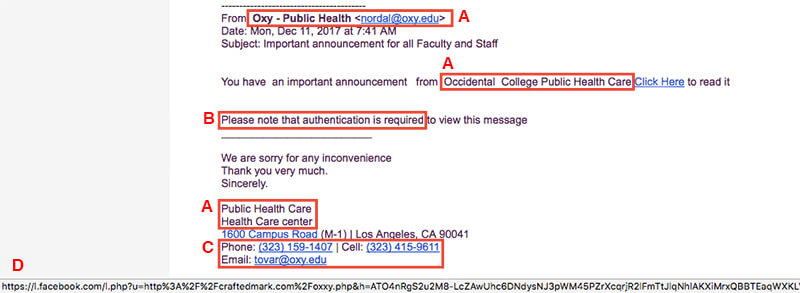Phishing Attacks: Don't Take the Bait!
What is phishing?
Phishing scams are fraudulent email messages that appear to come from legitimate sources (e.g., Oxy, your bank, or your Internet service provider). Usually, the messages direct you to a fake website or otherwise attempt to get you to divulge private information (e.g., password, credit card info, or other account details). The perpetrators then use this private information to commit identity theft.
What to LOOK FOR
- Wrong names: your name, the organization's name, or a group within the organization's name.
- Misspelled words and/or bad grammar.
- Incorrect or suspiciously complicated URLs.
- From a wrong or unknown email address.

